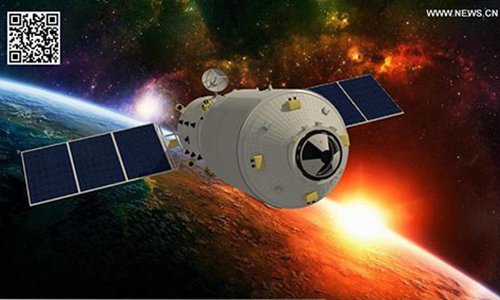Logistics system to use spacecraft by 2045: top launch technology firm
By GT staff reporters Source: Global Times Published: 2020/12/6 21:25:36

Photo: Graphic shows the launch procedure of China's first cargo spacecraft Tianzhou-1 on April 20, 2017. (Xinhua/Ma Yan)
Spacecraft will be used in China to provide logistics services on Earth by 2045, according to the China Academy of Launch Vehicle Technology (CALT), the nation's top institution in space vehicle launch technologies.
According to Zhang Xuhui, vice director of CALT, by 2045, when the country's space logistics network is completed, it will be able to make thousands of deliveries, carry vast volumes of cargo and even serve passengers.
The network will "drastically improve the speed of delivery", Zhang said, and it will complement the current land and air logistics networks.
In September, Bao Weiming, director of the technology department under China Aerospace Science and Technology Corp, said that by 2045, the space logistics network will reduce global delivery time to one hour.
Wang Yanan, an industry expert and chief editor of Aerospace Knowledge, told the Global Times on Sunday that building a logistics system through constant flights between the Earth and spacecraft in orbit would revolutionize global transportation.
"If aerospace technology can be incorporated into the air transportation industry, the delivery speed would easily exceed 10 times the speed of sound," Wang said.
But little work is being done on such projects in most countries, Wang said, because of the high cost.
"Even when it's commercialized, it will be tough to maintain adequate safety standards and control costs," Wang said. "Most countries are still trying to increase speed through developing new supersonic aircraft."
US-based Boeing developed the X-37, a reusable robotic spacecraft that can potentially be used as a space-based logistics craft, Wang said, and the UK has developed its SABRE spaceplane engine, a technological innovation that can potentially take airliners around the world within hours.
"But so far there are no countries that plan to build a space delivery network," Wang said. "If it's completed, it will be a milestone in the history of transportation."
Posted in: INDUSTRIES,BIZ FOCUS